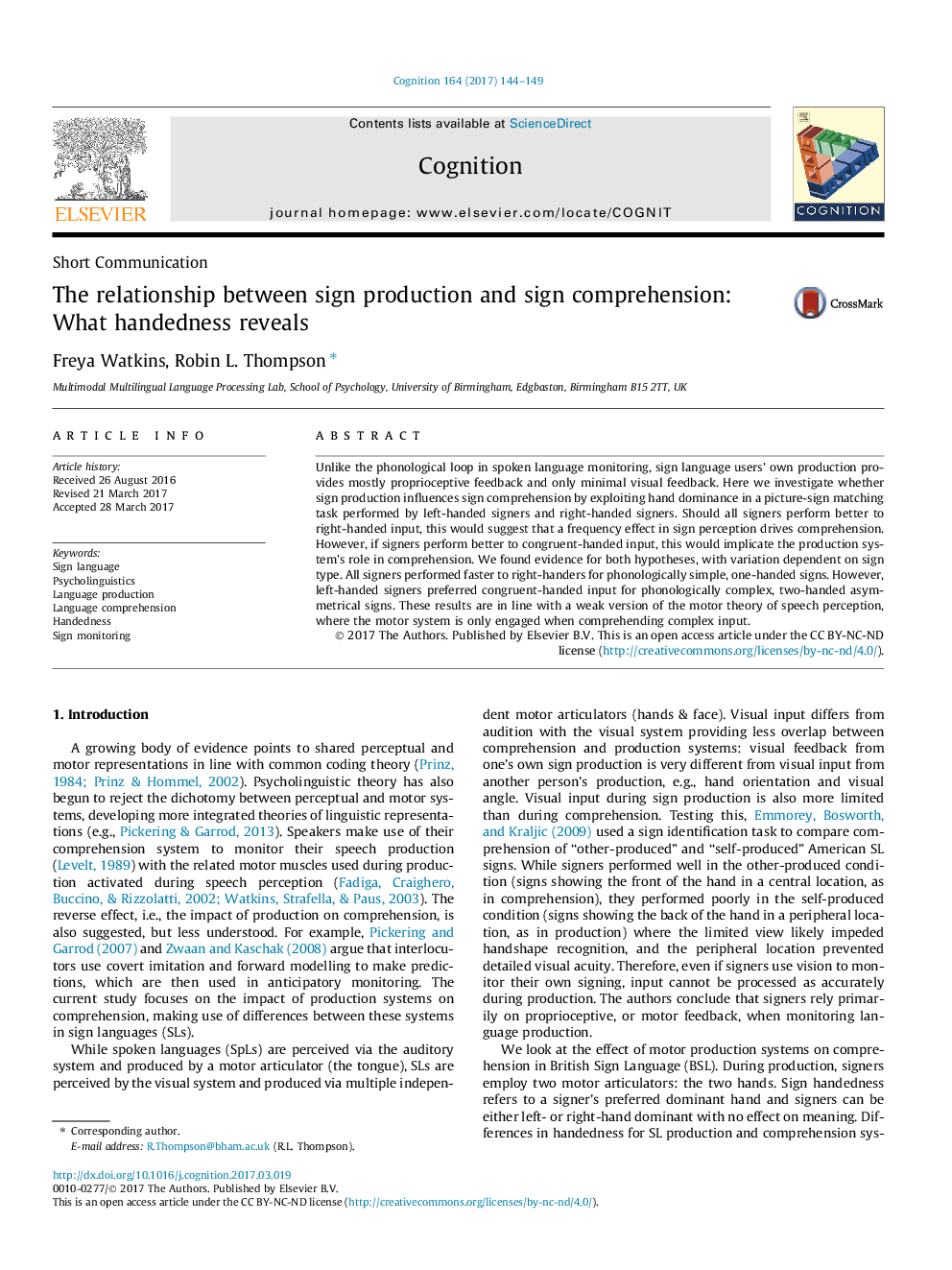| Article ID | Journal | Published Year | Pages | File Type |
|---|---|---|---|---|
| 5041611 | Cognition | 2017 | 6 Pages |
Abstract
Unlike the phonological loop in spoken language monitoring, sign language users' own production provides mostly proprioceptive feedback and only minimal visual feedback. Here we investigate whether sign production influences sign comprehension by exploiting hand dominance in a picture-sign matching task performed by left-handed signers and right-handed signers. Should all signers perform better to right-handed input, this would suggest that a frequency effect in sign perception drives comprehension. However, if signers perform better to congruent-handed input, this would implicate the production system's role in comprehension. We found evidence for both hypotheses, with variation dependent on sign type. All signers performed faster to right-handers for phonologically simple, one-handed signs. However, left-handed signers preferred congruent-handed input for phonologically complex, two-handed asymmetrical signs. These results are in line with a weak version of the motor theory of speech perception, where the motor system is only engaged when comprehending complex input.
Related Topics
Life Sciences
Neuroscience
Cognitive Neuroscience
Authors
Freya Watkins, Robin L. Thompson,
